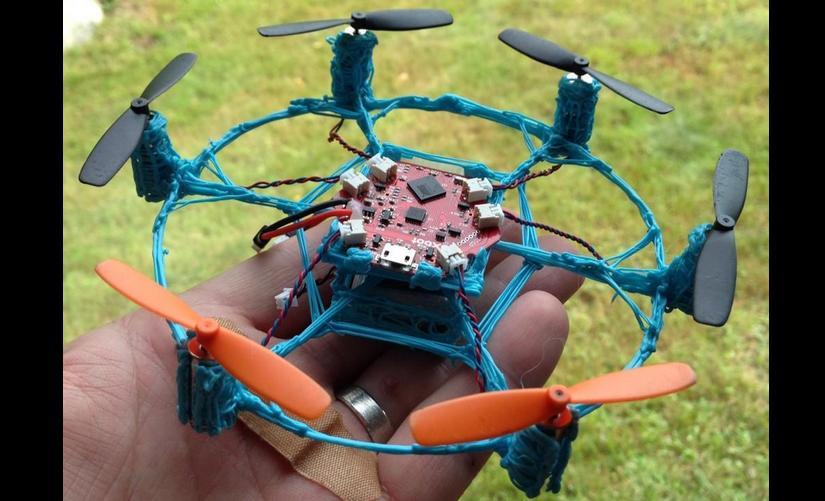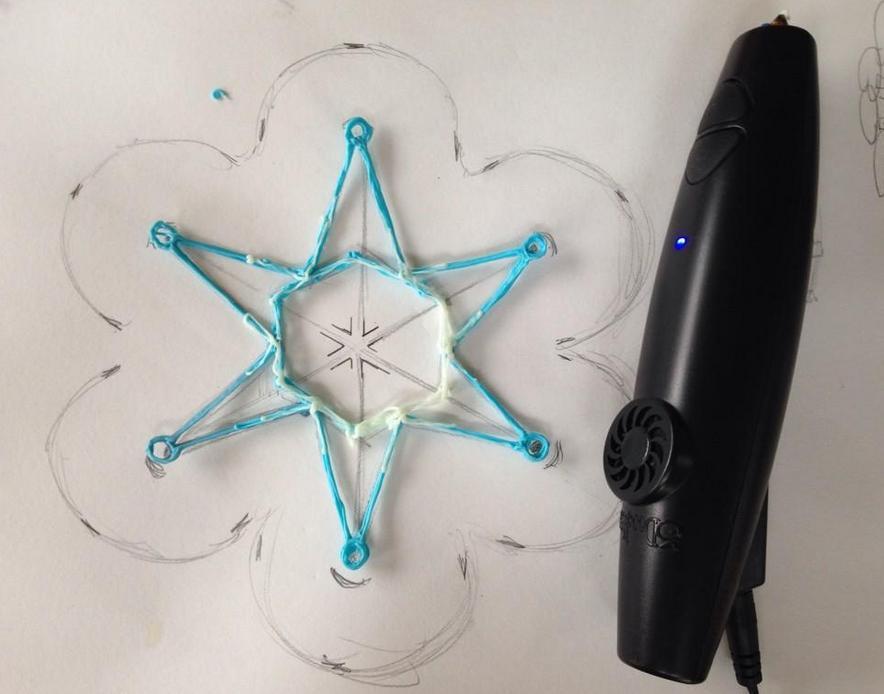The body of DeRosa’s first hexacopter (source: Plasticity Productions)
When 3D printing pens burst onto the scene about a year and a half ago, many people saw the technology as no more than a glamorized hot glue gun. They were fun to play with, but not really useful for creating anything practical. At least that’s what many people believed when the 3Doodler stunned the world by raising $2.3 million on Kickstarter. Since then, this glamorized hot glue gun has been partially responsible for some of the most incredible works of art that you will ever see. One artist named Justin Mattarocchia, 3D printed a life size plastic man. Another artist, Matthew Butchard, used the 3Doodler to create a remote controlled airplane and car. Both of these designs were incredibly unique and awe inspiring.
However, one man may have topped them all. Louis DeRosa, of Plasticity Productions has taken the use of a 3Doodler to an entirely new level, by using it to create a working hexacopter framed drone.
“One of the beautiful things about the 3Doodler is that once you have your idea, you can just get right to bringing it to life,” DeRosa told 3DPrint.com. “I had been planning it out in my head for a while, so once my pen was hot I was ready to go.”
For all of you who have built your own hexacopters in the past, you know how incredibly important it is to make sure that the aircraft is in complete balance. If it is only slightly off balance, it may not be able to fly at all. This is what makes the use of a 3Doodler in the creation of this hexacopter so amazing.
It wasn’t easy for DeRosa, as his first design, which features the blue star as its body, flew but was a bit off balanced. “I do a lot of eyeballing as far as measurements go,” DeRosa told us.
So after he flew the hexacopter around a bit, he decided to create an improved second version of the flying 6-winged aircraft.
“I disassembled Version One and got right to making a new one,” said DeRosa. “I tried to make the frame as sturdy as possible, while using as little plastic as possible to keep it light. Though I still just eyeballed it, I took a bit more care to make sure the props were all more or less evenly spaced and standing straight up. Version Two flies really well. Any issues with balance are more due to the drone’s components. Updating the firmware on the motherboard would probably fix the current minor issues.”

Version 2 (source: Plasticity Productions)
DeRosa tells us that everything on the drone was 3D printed with the 3Doodler, other than the motors, props, motherboard and battery. All-in-all it took him a couple of hours from the start of the first version, to the completion of the second version, including flight testing. The actual construction of the frames only took him several minutes to complete.
“One of the many things I love about the 3Doodler is that you can create on the fly,” DeRosa told us. “I’m not locked into anything, like you would be if you had a conventional 3D printer, printing a model fed through the computer. I am the computer, and not only is my extruder free to move on all axes, but so is the object being printed. I can pick it up and work on any angle at anytime.”
Designs like this go to show that the 3Doodler is certainly a lot more than just a glamorized hot glue gun. Not only can it be used to create interesting looking works of art, but it has now been proven to create working machines which were previously thought to require high precision.
Admittedly, I was one of those individuals who didn’t understand the excitement surrounding the 3Doodler when it came out. I was probably one of the people bashing it from the start. I must admit that I was wrong. The 3Doodler is here to stay, and I am excited to see what will come next from artists who get their hands on this ‘infinite axes 3D printer’.
What do you think about DeRosa’s 3D printed drone? Discuss in the 3Doodler Hexacopter forum thread on 3DPB.com


Comments
I think part of the pen process is art. Like comparing a computer or a formula to Picasso or Michelangelo. I can see both sides of this being exactly right. Sometimes you feel like precision, sometimes you don't.
Looks like a step-up from using toothpicks and hot glue. I'm still lost about the practical purposes of this 'pen'. It takes a lot man-power to create something, and lacks any of the precision and automation afforded by cheap 3D printers.